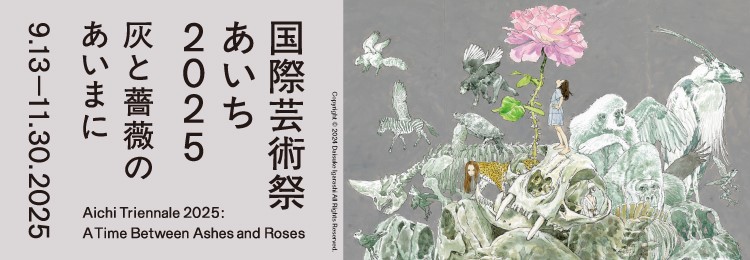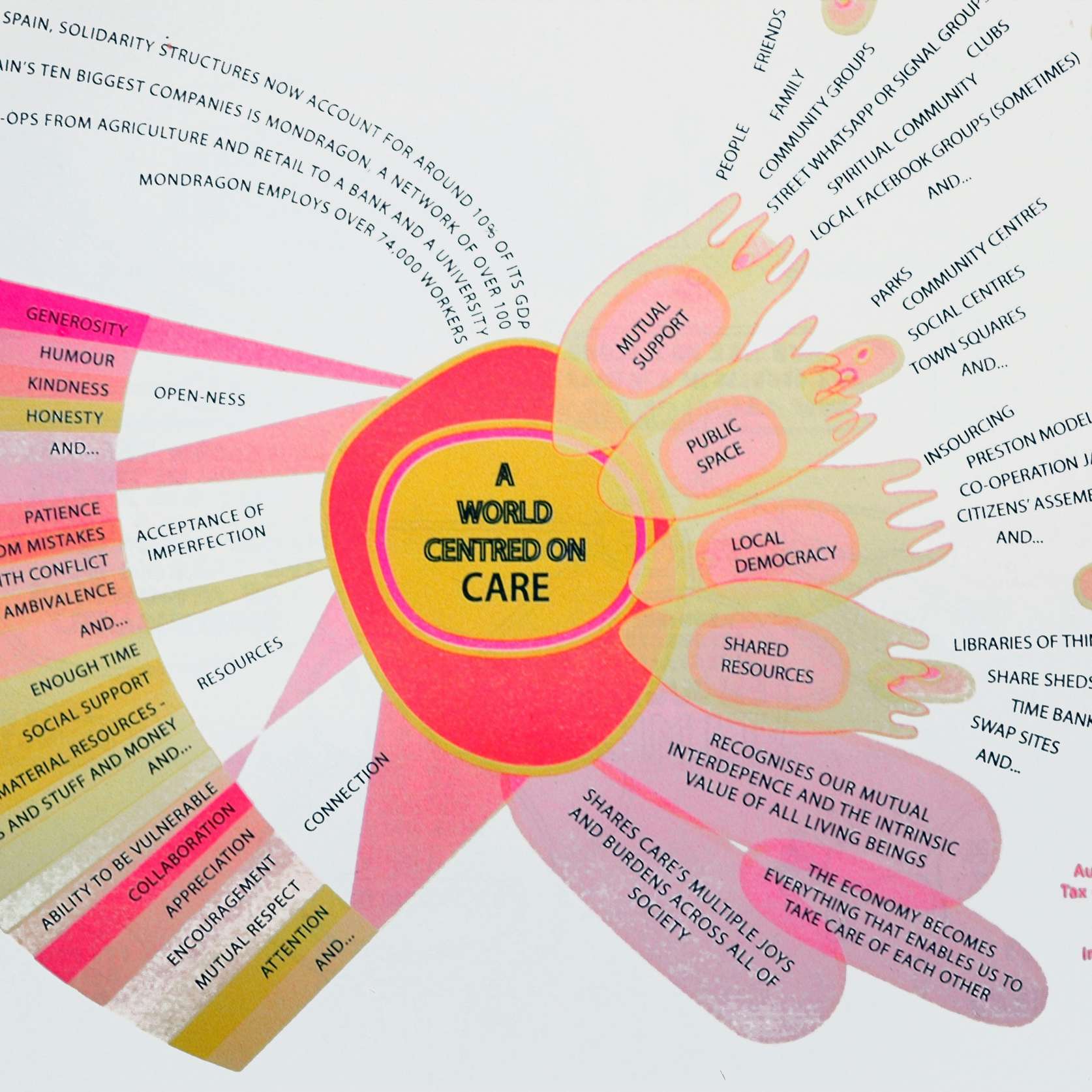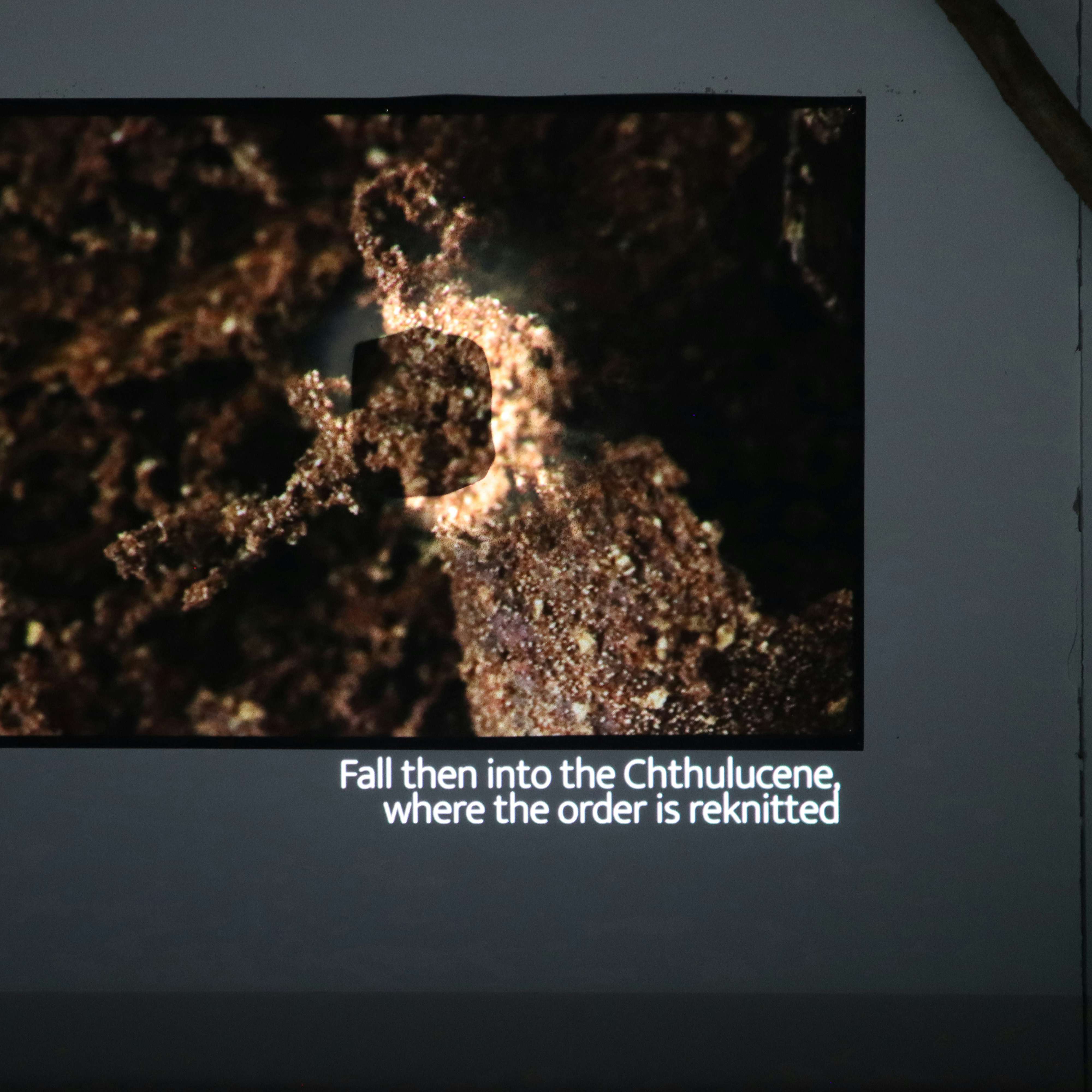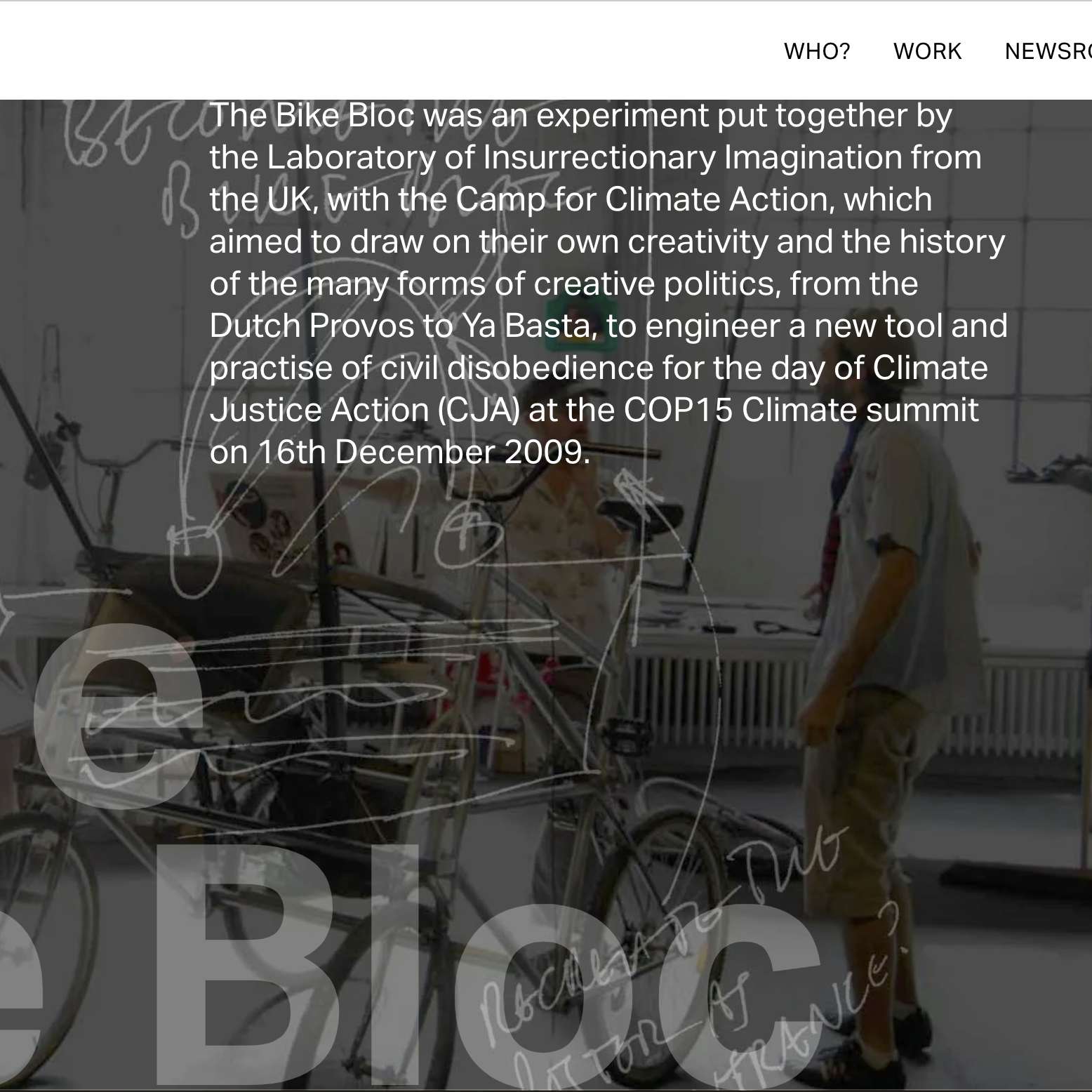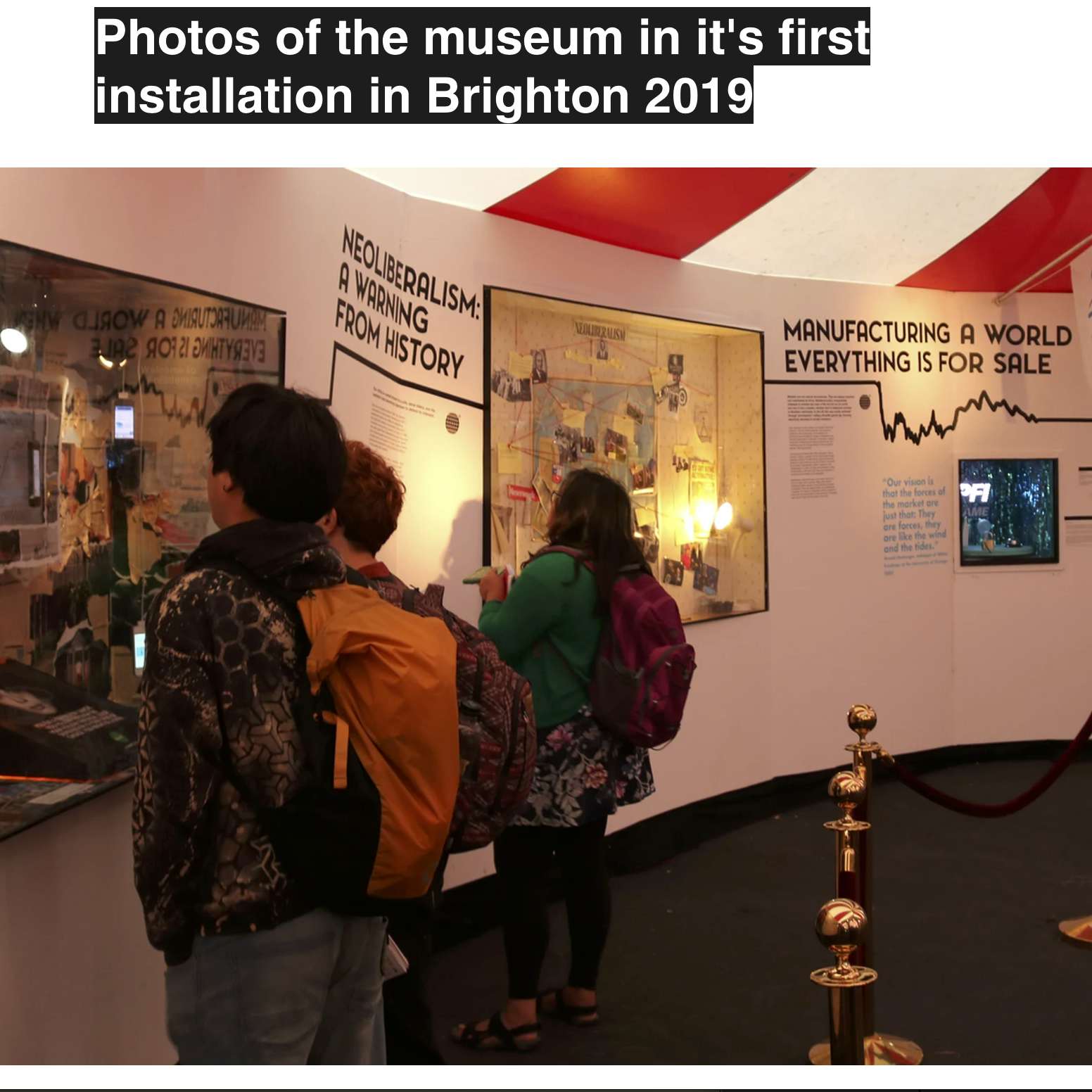アートと気候危機のいま vol.5 環境リーダー兼アーティスト、ジェーン・ローソンへのインタビュー(後編)
NPO法人アーツイニシアティヴトウキョウ [AIT/エイト]設立メンバーのひとりであり、TOTAL ARTS STUDIES(TAS) プログラム・ディレクター、ロジャー・マクドナルドによる、気候危機とアートについての不定期連載記事シリーズ。海外の動向の「いま」をわかりやすく紹介する連載の第5回は、マンチェスターを拠点に活動するアーティスト、ジェーン・ローソンへのインタビュー後編をお届けする。*The English version is below the Japanese.
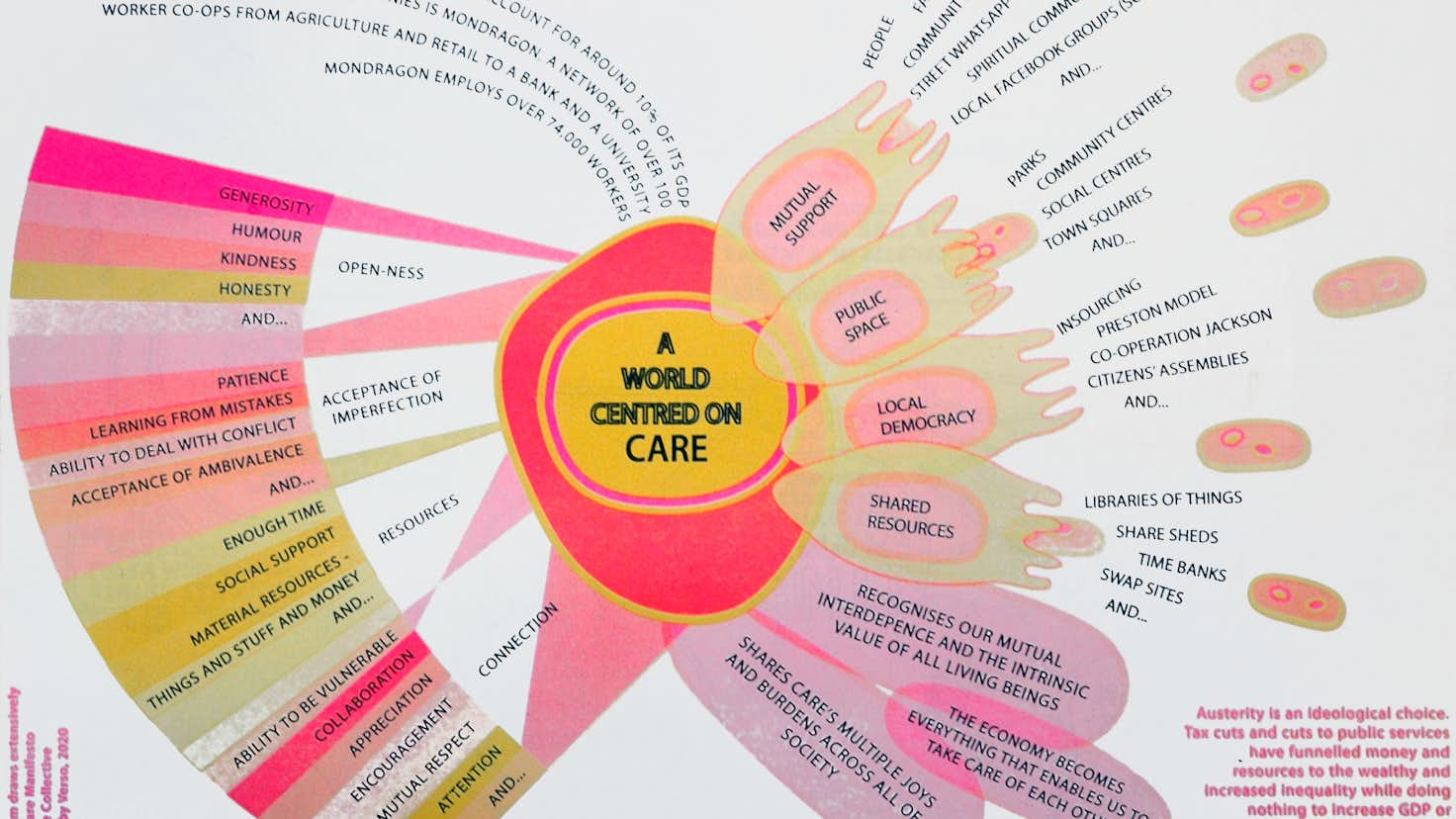
前編はこちら
──あなたは異常気象が頻発するヨーロッパに住んでいますが、これから先10年で、気候危機は、そして私たちの日常生活はどうなっていくと思いますか?
英国では、政権与党がほとんどプラスに機能しておらず、これ以上悪くなりようがないというところまできました。そして、世論はついに政権に対し、はっきりとした意思表示をするようになりました。例えばそれは、現在行われているさまざまなストライキを多くの国民が支持していることからも見て取れます。
今後10年以内に、民意が気候変動対策を大きく後押ししていくだろうと思いますが、10年後にようやく実行されるのでは遅いのです。その頃には、少なくとも(産業革命前からの世界平均気温上昇を)2℃に抑えなければならないという大きな壁が立ちはだかっているでしょう。異常気象がますます増え、日常生活への影響も甚大化しているはずです。私が住むマンチェスターでは、過去2年間に2度、洪水によるレッド警報(生命への危険がある)が発令されましたが、これは10年前には考えられなかったことです。そして、北半球に暮らす裕福で比較的保護されている私たちがまず知るべきは、世界で最も裕福な10%の人々が二酸化炭素の50パーセントを排出し、最も貧しい50パーセントの人々は二酸化炭素の10パーセントしか排出していないということです(*1)。
──環境問題についての情報はどこから得ていますか? 具体的なウェブサイトや書籍などはありますか? また、同じような考えを持つ友人と話をしたり、情報やヒントを共有したりすることはありますか?
情報は、様々なところから得ています。たとえば、気候心理学者でアクティビスト、エデュケーターのジェシカ・クレチカ(Jessica Kleczka)による「ポジティブ・クライメート・ニュース(Positive Climate News )」。破滅的な終末論的気候主義(Climate Doomism)が蔓延しつつある中で、気候危機を踏まえながらも前向きな情報を発信しており支持を集めています。
気候科学者のキンバリー・A・ニコラス(Kimberly Nicholas)の著書『アンダー・ザ・スカイ・ウィー・メイク(Under the Sky We Make)』を読んで以来、彼女が自身のウェブサイトで発信する情報を追っています。
『エコロジスト(The Ecologist)』誌と 『ガーディアン(The Guardian)』誌 には有用な記事がたくさんありますし、気候変動に関連するトピックに焦点を当てた国際的なジャーナリズム組織「デ・スモッグ(DeSmog)」のブログ は、気候変動対策を妨げている勢力について調べるのにとてもすぐれています。
また、友人たちとも話をします。彼らの多くは、気候崩壊へと向かう現代社会の道筋に積極的に介入しています。ケリー・モリソンというアーティストとは長い付き合いで、彼女は最近スコットランドの「クライトン・カーボン・センター(The Crichton Carbon Centre)」で働き始めました。プロジェクト・オフィサーという肩書きを持ちながら、アーティストとして泥炭地の再生に取り組むという、じつに興味深い働き方をしています。
私自身は、キャッスルフィールド・ギャラリーの仕事の一環として、2021年に低炭素で環境に配慮したアート制作と体験プログラムを開発する「SUSTAIN」を立ち上げました。その内容は、デジタル・エクスチェンジ(グレーター・マンチェスターのアーティスト5人と、オーフスのアーティスト5人が、低炭素アート制作にフォーカスしたワークショップとディスカッションを行う6ヶ月間のプログラム)と、2人のアーティストがデンマークとマンチェスター間を列車で移動し、2ヶ月のレジデンスを行う「スローカルチャー・レジデンス(Slowculture Residence )」というものです。
この活動は、「アロス・オーフス美術館(ARoS Aarhus Art Museum)」との協働で行いました。マヤ・チョードリー(Maya Chowdhry)やクリス・アルトン(Chris Alton)ほか、このプログラムに参加したアーティストは膨大な知識を持っています。ソフィー・キング(Sophy King)とハイジ・ニコライセン(Heidi Nikolaisen)の2人は、低炭素ウェブサイト(*2)をつくるための素晴らしいチェックリストをつくりました。
その後、SUSTAINへの参加希望者が増えたので、気候変動問題にコミットしたいアーティストのための「SPARK」というネットワークを立ち上げました。このグループに参加しているアーティストたちにもまた、膨大な知識と経験があります。こうして長い間、環境活動に携わってきたことで、いまでも同じように活動を続ける多くの友人たちとのコンタクトがあります。いいネットワークがなければ、この問題にかかわるのはとても大変なことでしょう。
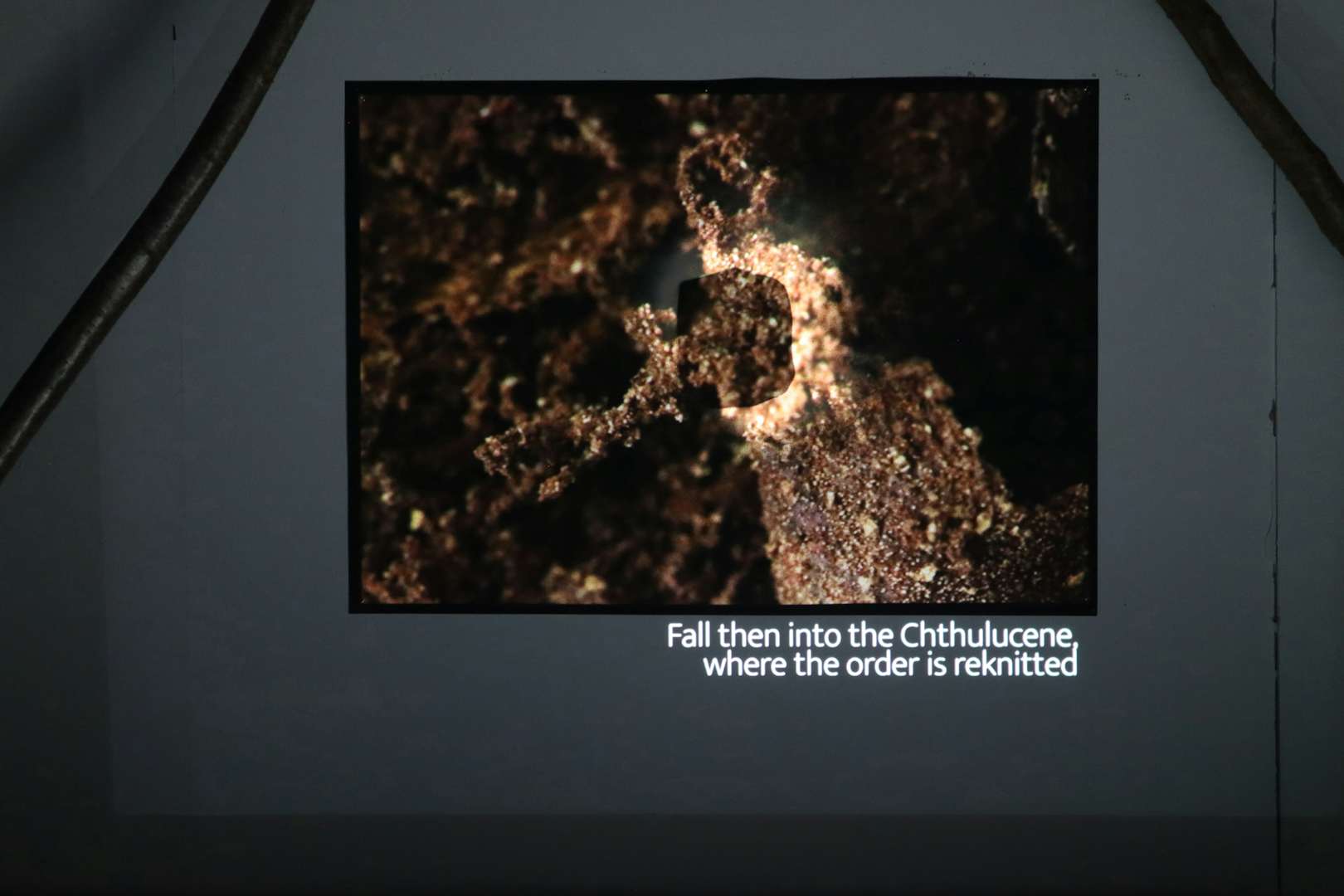
──アートセクターは、環境問題に関してどのような取り組みをより積極的に行うべきでしょうか。例えば、飛行機移動など特定の活動を控えたり、これから訪れる異常な暑さから逃れて人々が涼をとるための空間として美術館を活用したり。あるいは、地元のコミュニティ形成に貢献する、なども考えられますね。
個人的には、アート界がビエンナーレやレジデンスなどの海外渡航に大きく依存していることが問題だと感じています。現在のアートシーンでは、数日間かけて国際線に乗ったり、ベルリンとマンチェスターを往復するのはごく普通のことです。行動を変える最大の原動力のひとつは模範を示すことであり、創造力を駆使して、より低炭素な方法を見つけることができます。もちろん、リアルな場で直接触れ合うことで得られる糧にとても感謝していますが、飛行機移動は決して「普通」の選択ではなく、特別なものであるという認識を持つ必要があると思います。
映画プロデューサーのダニー・アドミス(Dani Admiss)のプロジェクト「サンライト・ダズント・ニード・ア・パイプライン(Sunlight Doesn't Need a Pipeline)」 は、「ギャラリー気候連合(Gallery Climate Coalition(GCC)」と同様に、アート業界を脱炭素化させる方法について、非常に興味深い取り組みを行っています。このプロジェクトの一環として行われたデジタルの脱炭素化に関するワークショップに私も参加し、デジタル活動によって二酸化炭素の排出をいかに削減できるかを学びました。
例えば、アーティストの代わりに他の人が遠隔で作品を設置したり、講演ができる地元のアーティストのネットワークを国際的に構築することで、アーティストの飛行機移動を減らすことができます。また、スウェーデンの「IASPIS」(ストックホルムにあるインターナショナル・アーティスト・スタジオ・プログラム)が行っているように、低炭素の移動手段を利用するための予算も十分に確保することです。
飛行機移動を減らす場合、気候正義(先進国や新興国が地球温暖化対策への責任を果たし、すべての人々が暮らしと健全な生態系を持続可能にするための取り組みを行うという考え)の側面を考慮することが重要です。南半球のアーティストは、自分の作品を多くの人に見てもらったり、自分の活動でお金を稼ぐことが難しいため、彼らの声を聞くことがとても重要です。彼らは炭素負債をあまり背負っていないため、脱炭素化のためのコストも北半球のアーティストよりも負担が少ないというのがフェアなのです。
気候危機は社会システムの問題であり、個々の行動も重要ですが、より広いシステムやインフラに目を向ける必要があることを常に念頭に置いておく必要があります。アート産業は、物事を異なる角度から眺めることで、異なるビジョンや可能性を提示できます。とくにグローバル・サウスからの声に耳を傾ける方法をアートを通して提供することで、ここに貢献できると考えています。
──地球環境や気候危機の問題、あるいは気候危機への適応について、現在または過去にあなたが影響を受けたアーティストはいますか?
たくさんいますが、ここではほんのひと握りをご紹介します。
つねにインスピレーションの源となっているのは、「ラボラトリー・オブ・インサレクション・イマジネーション(Laboratory of Insurrectionary Imagination)」 です。彼らの実験には、90年代の英国における多くの抗議活動の特徴であった「クラウン・アーミー(Clown Army)」(*3)や、コペンハーゲンのCOP15における移動式不服従活動「バイク・ブロック(Bike Bloc)」があります。
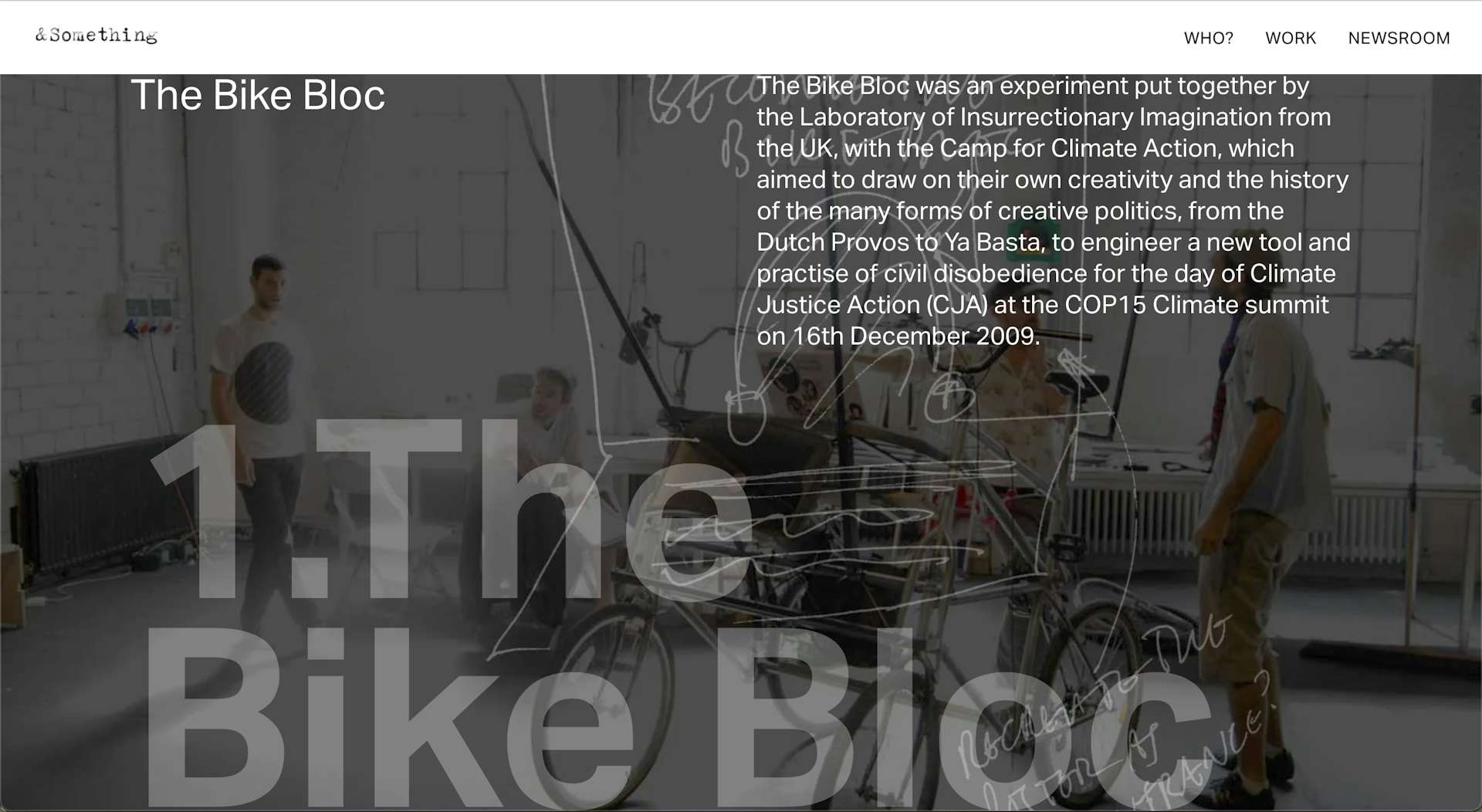
アーティストでアクティビストのエリー・ハリソン(Ellie Harrison)は、常に挑発的で鋭く、ユーモアを効果的に織り混ぜながら活動を続けています。 彼女は、アーティストとしての活動の幅をアクティビズムにも生かすなど、明確な政治的分析を活動に取り入れています。たとえば、「グラスゴー・コミュニティ・エナジー(Glasgow Community Energy)」を設立し、再生可能な電力を生成しています。また、1年間の公共交通機関での移動距離を算出する「ゴールド・カード・アドベンチャーズ(Gold Card Adventures)」などのプロジェクトもよく知られています。
アーティストでライターのトム・ジェームス(Tom James)と、アーティストのアレックス・ハートリー(Alex Hartley)は、イギリスの田園地帯にある広大な美術館・公園「コンプトン・ヴァーニー(Compton Verney)」のジオデシック・ドーム(*4)を中心に、「クリーニング(The Clearing )」という素晴らしいプロジェクトを行いました。ここでは、私たちが根本的な軌道修正をしない限り崩壊するであろう世界で、これからどのように生きていくかを学ぶことができます。
また、キュレーターでライターのアビジャン・トト(Abhijan Toto)と、カリフォルニア大学Ph.Dのプジタ・グハ(Pujita Guha)が共同ディレクターを務める「フォレスト・カリキュラム(The Forest Curriculum)」も紹介したいプロジェクトです。これは、アーティストや研究者、先住民族、思想家、ミュージシャン、活動家とともに学際的な研究と相互学習を行う巡回型・遊動型のプラットフォームです。
アーティストで栽培者、オーガナイザー、デザイナーのロザリエ・シュワイカー(Rosalie Schweiker)は思慮深く刺激的なアーティスト。自身の作品に参加型バジェット(*5)を使用しています。
キュレーターでエデュケーター、アジテーターのセシリア・ウィー(Cecilia Wee)は、先ほどお話しした「サンライト・ダズント・ニード・ア・パイプライン」を作品の一部として使用しています。
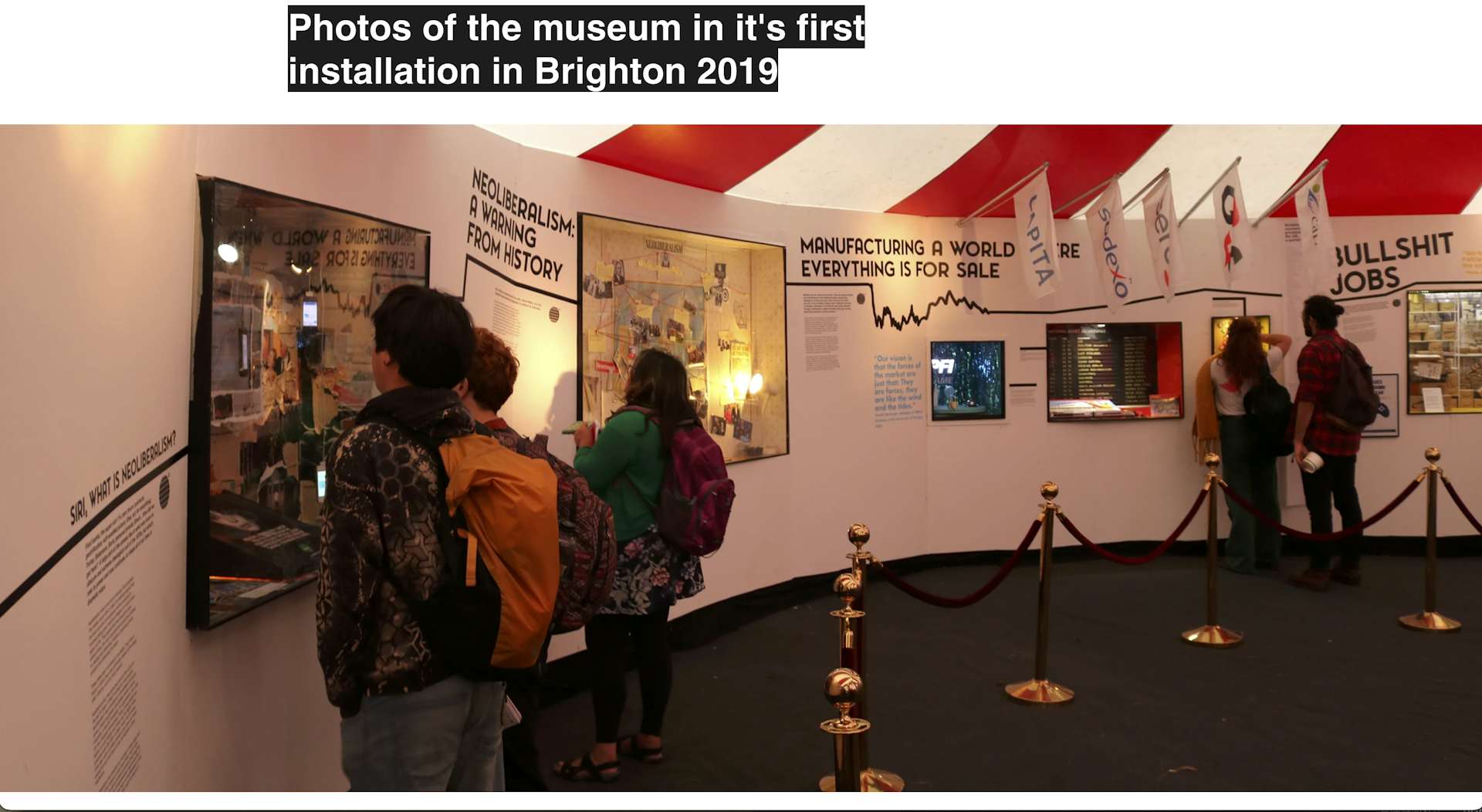
アーティストでアクティビストのダレン・カレン(Darren Cullen)は、風刺やウィットに富んだ作風で知られ、南ロンドンにある隠れ家的なスペース「ネオリベラリズム博物館」を運営するなど精力的に活動をしています。また、彼の「ヘル・バス(Hell Bus)」は、石油・ガス会社が、石油・ガス会社から地球を救おうとする不条理な光景をバス内に展示するインスタレーション。彼はこうしたプロジェクトに積極的にかかわっています。
あとがき by ロジャー・マクドナルド
このあとがきを書くにあたって、私はまず、ジェーン・ローソンに対面で会ったことがないことを明記しておかなければならないだろう。COVID-19の世界的流行が起きたとき、多くの人がそうであったように、私たちの関係性は、オンライン会議システムやEメールを介して育まれた。おそらく2019年以前のように格安航空券で気軽に長距離フライトを選択しないことが普通になったことも、私たちの多くが気候危機問題に少なからず関係していることの反映でもあるのだろう。私たちのオンラインでの会話や友情は、私たちの時代の象徴であり、未来をどう想像できるかを示唆するものだと思う。
ジェーンは、英国で初めて開かれた気候変動対策キャンプに参加した、先駆的なアーティストであり活動家だ。アーティストをはじめ、さまざまな立場の人々がこうしたアクションに参加したのは注目すべきことだ。私たちは彼らの行動に勇気づけられ、インスピレーションが得られるからだ。メディアは、こうした気候変動活動を「若者」や「学生」など、特定の層で分類する傾向がある。しかし、実際は、あらゆる年齢層や経歴、関心事を持つ多くの人々がこの危機を認識し、自分たちにできることを行っている。ある人は仕事を辞めフルタイムの活動家になり、ある人は地域のコミュニティ組織で働き、ある人は友人と話し、ある人はこの危機について考える。これらのすべてが、今日、世界のあらゆる場所で、気候変動活動の「集合体」(アッサンブラージュ)と呼ぶにふさわしいものを構成している。たった一人の声ではなく、たくさんの人々の多様な声が集い、そして、それぞれにできることを実践しているのだ。
ジェーンは、気候危機が、より大きな社会的・政治的・経済的な力の徴候であると明確に理解している。「現在の苦境の根源は、資本主義とその無限の成長へのエネルギーである」と彼女は言う。これはとても重要な認識である。政府や大企業に支えられた主流の環境保護主義は、気候危機のより深い原因を分析できないことがあまりに多いのかもしれない。彼らは単に国連のSDGsや、個人の消費行動を変えることの重要性について話すだけなのだから。しかし、ジェーンのようなアーティストは、私たちにもっと広い視野を指し示してくれる。
気候危機が、非常に特殊な経済・政治システム(資本主義や新自由主義と呼べるもの)に根ざしていると理解し始めることで初めて、意味のある行動や考え方が明らかになるのである。
*1──参考記事:「もう一つの「共通だが差異ある責任」。CO2排出量の50%は世界上位10%の富裕層に排出責任。 下位50%の貧困層の排出量は10%だけ。英NGOが報告書で指摘(RIEF)。」(一般社団法人環境金融研究機構、2015年)https://rief-jp.org/ct8/56641
*2──インターネットが多くの電力を消費し、世界の航空産業と同等かそれ以上の二酸化炭素を排出していることが問題視されるようになったことから、ウェブサイトの制作も低炭素を意識する動きが広まりつつある。
*3──Clandestine Insurgent Rebel Clown Army、クラウン・アーミーあるいはCIRCAの名称で知られる。企業のグローバル化や戦争などに対して、道化やノンバイオレンス活動によって行動する活動家グループ。
*4──バックミンスター・フラーが1947年に考案した、線分の集合体で構成されたドーム型構造物。
*5──市民の意思を行政活動に直接的に反映させるため、行政の予算編成に市民が直接関与する仕組み。

